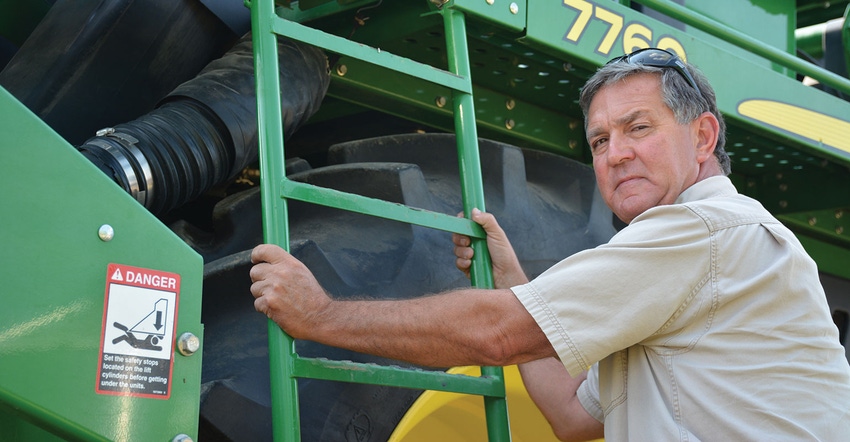
Modern farm equipment, with GPS units, soil probes and other metering or monitoring devices collect and store masses of data.
“We gather a wealth of information, but unless we can put it to use, it’s not relevant,” says John Lindamood, Tiptonville, Tenn.
“Managing data is the hardest part of using technology,” he adds.
He and his farm manager/gin foreman, Daniel Arant, are tapping into that data cache to improve farm efficiency. They use a whole farm management software program, Granular ( http://www.granular.ag ), to turn numbers into actionable information.
Lindamood initiated the data collection effort in 2004. “We were gathering a lot of information, but we had no way to apply it,” he says. “We’ve come a long way since then.”
Information now helps them manage field production zones, labor and bookkeeping. Every employee has a smartphone, he explains, with an app that identifies the work for the day. The app indicates where to go and what actions to take at certain locations.
“It’s a huge asset to manage time and labor,” Lindamood says.
They also use satellite and aerial imagery and soil moisture monitors to collect field data. “The program communicates that information to the computer where we can manage irrigation and crop health,” Lindamood says.
Granular
“Granular is a platform to manage day-to-day operations,” Arant says. “It also retrieves information we need to make budget decisions. We pull in all the data on a daily basis from the field and use it to make field applications.
“From smartphone to computer, it becomes a decision-making tool.”
Lindamood says the data may help manage production practices more closely. “We haven’t used variable rate seeding yet,” he says, “but we are looking at it.”
He says the concentration on technology has indicated a need for a different kind of employee. “Daniel is willing to try anything,” he says. “He’s made a lot of our progress possible and is responsible for a lot of our development in precision agriculture.”
Lindamood says his children likely will not pursue a career on the farm so the plan is when he retires, he will turn management over to Arant. And they are looking for more employees to take on technology.
Lindamood says a young man who worked on the farm in the summer and will come back next year may provide a new model for farm employee recruitment.
“We will help him with his education for a commitment of two years working for us after graduation. We need more technology savvy workers,” he says. “If this model works, we will try to repeat it.”
Different skills needed
Modern farms, he adds, need employees with a different skillset, more than an ability to drive tractors and harvesters. “We need good, hardworking, dedicated employees skilled in technology. We will look for college graduates who want to live in a rural setting.”
Lindamood took over the farm from his dad, Bill, now 90, who went to Harvard and graduated in three years to get back to the farm.
“He’s still in the office almost every day.” The farm began as a vegetable operation. They added a cotton gin in 1921.
Lindamood graduated from Murray State University and opened a restaurant right out of college. “But I came back to the farm. Our children are not coming back, but they are happy and healthy in other occupations.”
He’s excited about the near-term opportunities, despite some weather and market challenges.
Rains that persisted from last fall well into the summer hampered planting, he says. And low prices make profitability a hard goal.
Marketing
“The most difficult part of farming,” he says, “is managing commodity markets. I buy calls in the fall and buy puts in the spring. That strategy has offset some low prices.
“We have decent crops,” he adds. “We will manage to sell them. But we need a resolution to the trade dispute.” He says he supports President Trump but hopes the trade war ends soon.
Cropping plans might change.
He may reduce cotton acreage from this year’s 3,400, depending on what corn or soybean prices do. “We need to rebalance rotation, anyway,” he says. “We have been heavy in cotton, and we need a crop that adds organic matter back to the soil.
“The cotton market may not be exciting, but we average 1,250 pounds per acre. We’re cotton farmers; year in and year out, we can make a cotton crop.”
He’s at least cautiously optimistic, too, about opportunities ahead.
“It’s an exciting time to farm, with these technological capabilities,” he says. “I think we are better stewards. We don’t manage the crop the way we used to and are using fertilizer and chemicals more efficiently. And combining that technology with minimum-till and cover crops, we are reducing runoff and improving soil health.”
And they have the data to prove it.
About the Author(s)
You May Also Like






